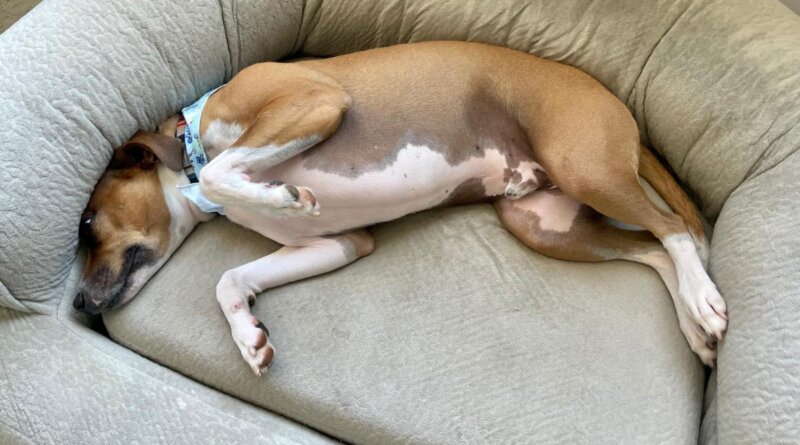7 Common Dog Sleeping Positions & What They Mean
To keep the lights on, we receive affiliate commissions via some of our links. Our review process.
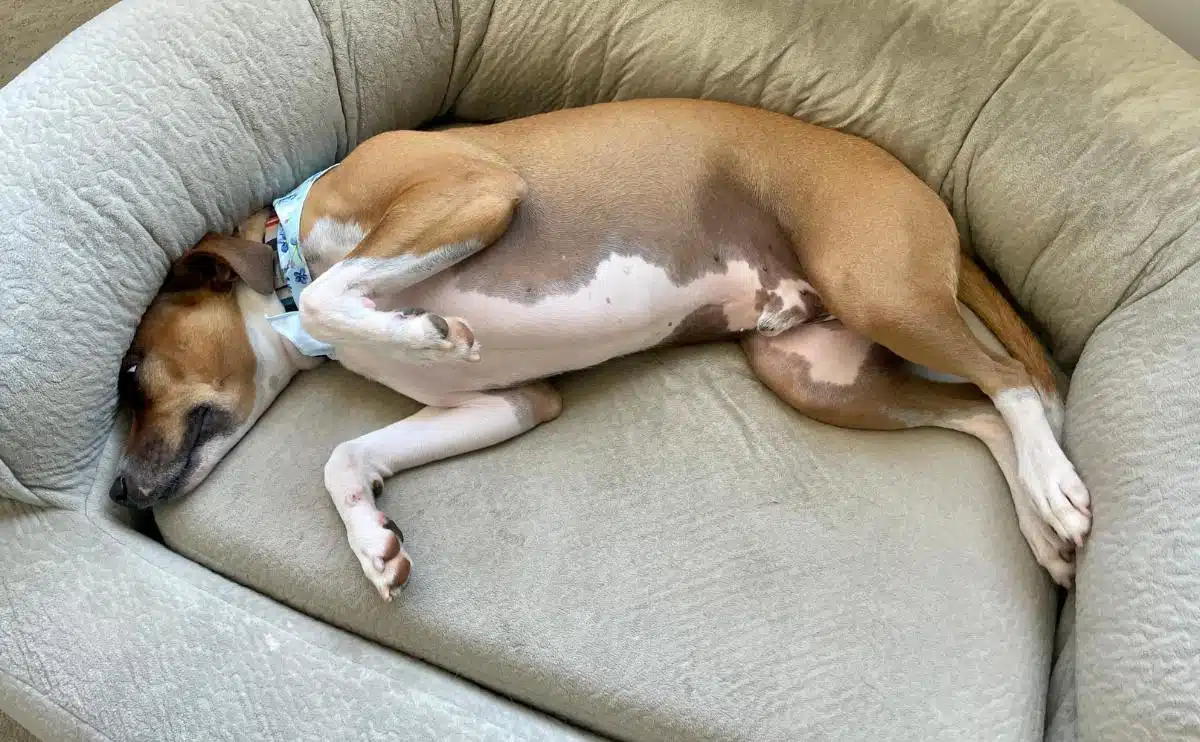
Almost nothing’s more adorable than watching our furry friends sleep, but sometimes our pups can get into the most amusing body contortions when they’re in for a big old snooze. Most canines have several sleeping positions they prefer, but what do they all mean? Why does your pup spread eagle on the floor or go belly up with his paws in the air to catch some z’s? We’ve uncovered what the most common dog sleeping positions can reveal about your dog and some interesting tidbits about canine snoozing habits.
What Do Dog Sleeping Positions Mean?
Although research into dog and puppy sleeping positions is still pretty new, there’s a general belief that each sleeping position has at least some meaning behind it. Here are the most common canine sleeping positions and what experts think they can tell you about your pup. We also have personal experience with each of these and example photos modeled by our professional snoozer, Georgie the Cavalier King Charles Spaniel, taken by his dog mom Sadie Cornelius.
1. The Side Sleeper
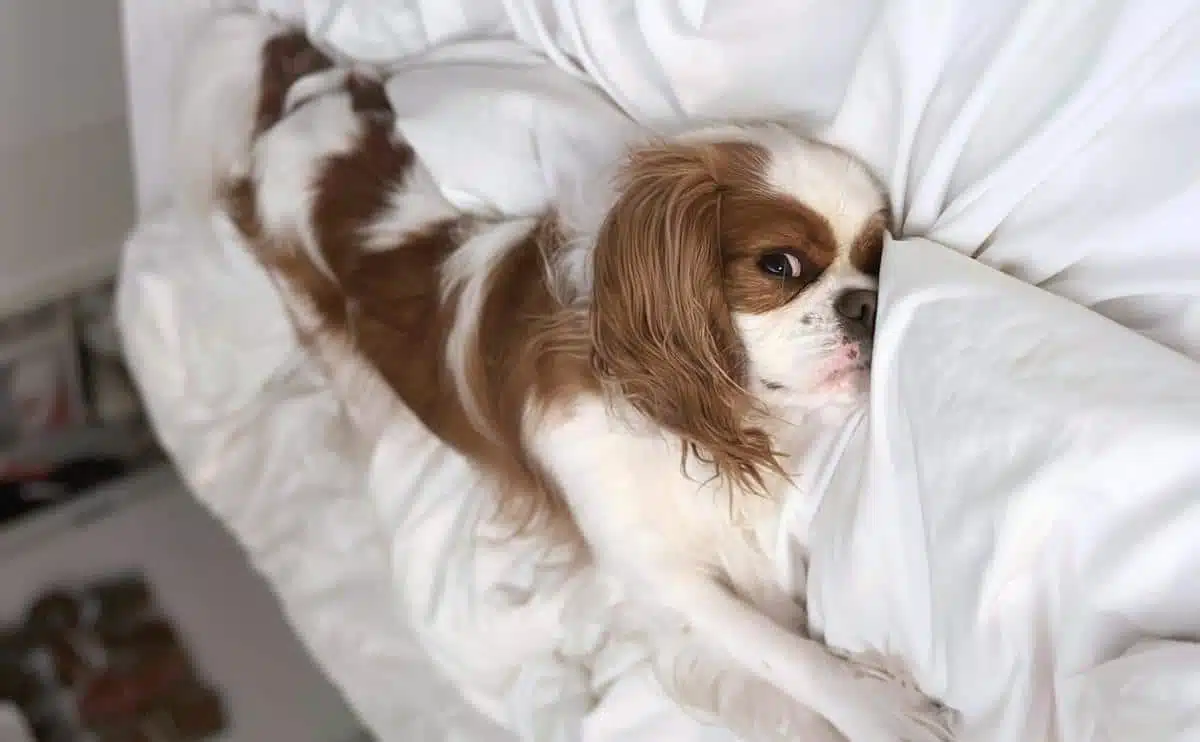
As with humans, the most common position for dogs is sleeping on their side. When your dog snoozes on his side with his legs extended, it means he’s feeling calm, content, and perfectly safe in his environment. Dogs with arthritis or other orthopedic problems often use this position because it’s easier on aching joints. And puppies usually prefer this pose when they sack out for a nap.
If this is your pup’s favorite sleeping postion, we suggest the plush and cozy MidWest Homes for Pets Deluxe Dog Bed, which gives your dog plenty of room to stretch out. Or if your aging pup needs some extra joint support, the Brindle Memory Foam Orthopedic Bed could be the perfect solution.
2. The Donut
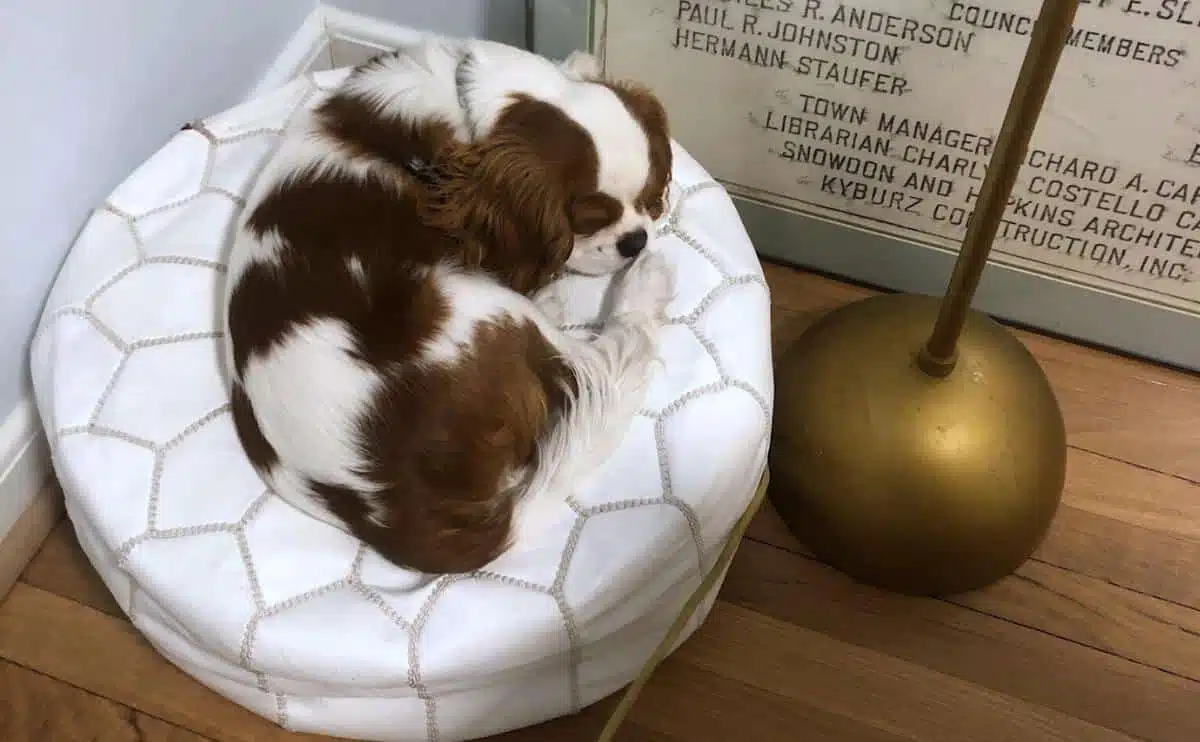
Does your dog curl up in a ball when getting some shut-eye? Dogs that exhibit the donut pose are curled up like a bagel, with their legs tucked close into their bodies and their tail wrapped around their body close to their nose. This sleeping position can mean several things.
It could be that your dog isn’t feeling entirely safe in his environment because he’s protecting his body. But it can also mean that he’s feeling cold and trying to maximize his body warmth. This is also a sleeping position that some dogs use when they’re not feeling well. If this isn’t a typical position for your pup, you may want to pay closer attention to other signs of illness. A super popular dog bed choice for donut sleepers is the Best Friends By Sheri Calming Donut Bed.
3. The Belly Up
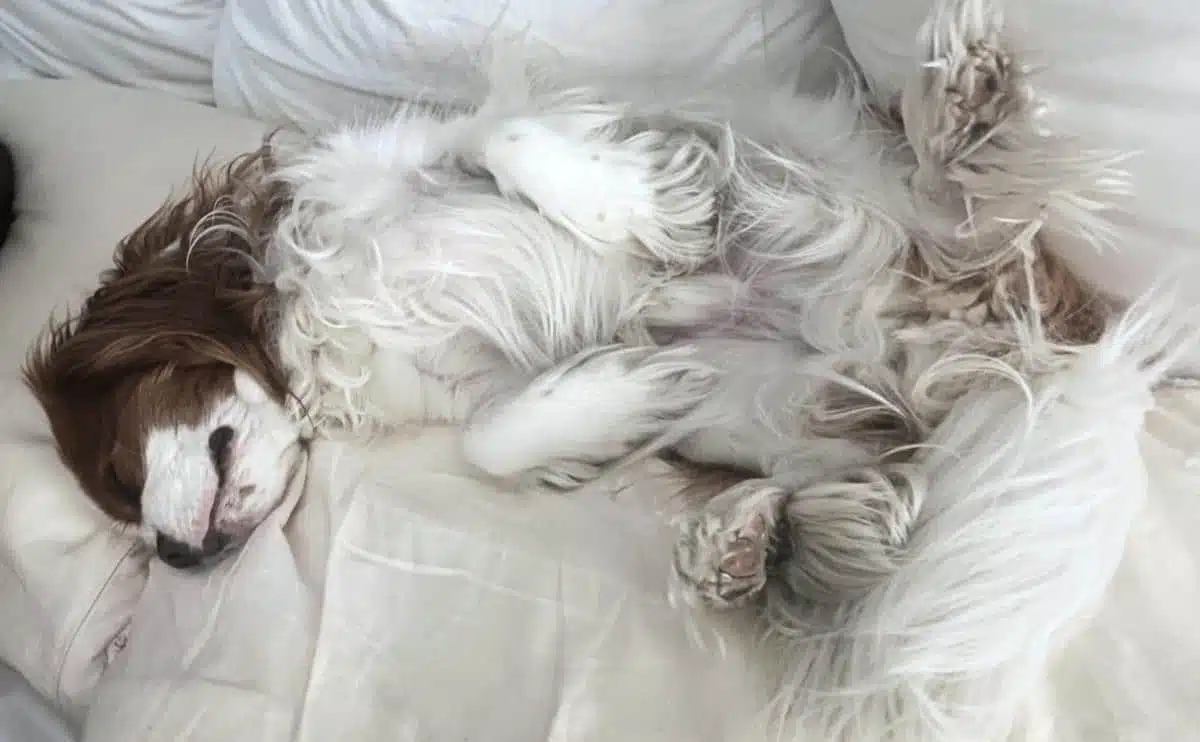
The belly-up is one of the goofiest, albeit adorable, sleeping positions. There aren’t many photo-worthy poses that compare to a dog lying flat on his back with full belly exposure and legs up in the air. Although this position seems like it would be uncomfortable, it actually means that your pup is feeling safe, secure, and completely relaxed in your home.
Another reason some dogs sleep belly up is to cool off. Most dogs have much thinner fur on their bellies, so snoozing with their abdomen exposed is a more efficient way to get airflow to their bodies. Back-sleeping with their legs spread out is also a way some dogs get comfort from aches and pains, as this position can help relieve pressure on joints and muscles. See our article, “Why do dogs sleep on their backs?” for more details. We suggest the Furhaven Cooling Gel Dog Bed to keep belly-up sleepers cool and comfy.
4. The Lion Or Sphinx
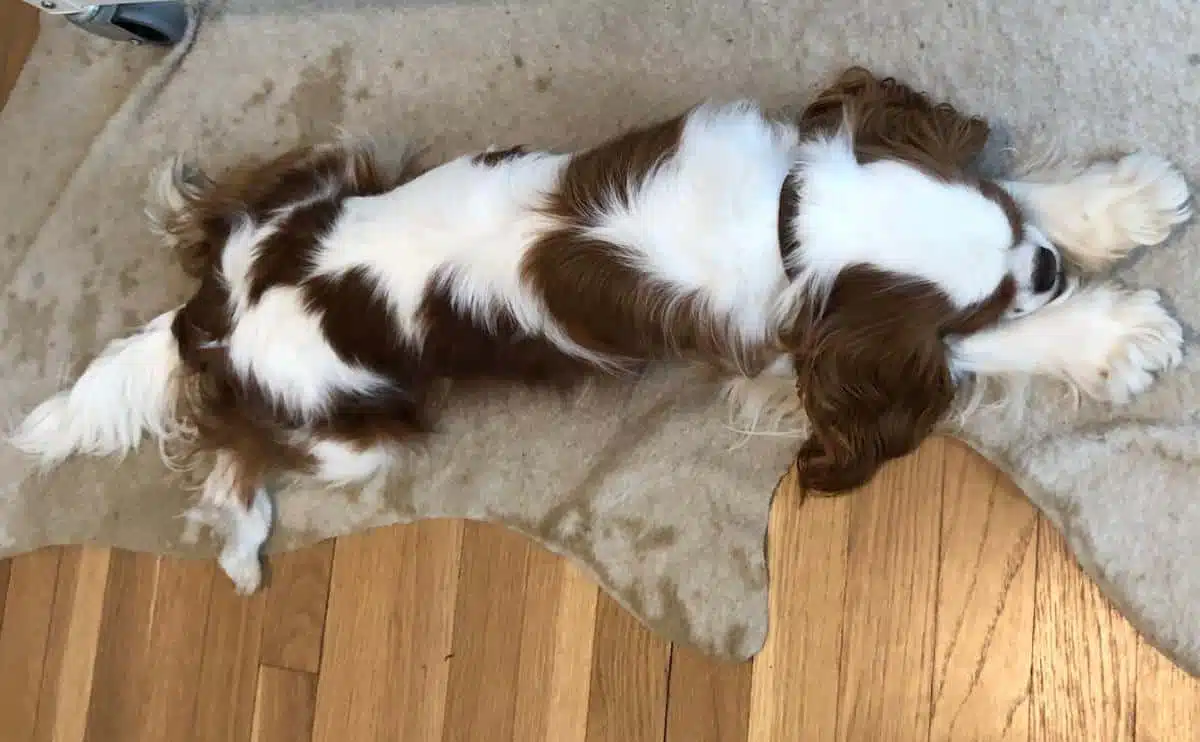
In this pose, dogs sleep on their bellies with their head resting on top of their front paws. However, this isn’t a position for getting some serious shut-eye. It suggests that dogs are taking a quick cat nap while still staying partially attentive if they feel like they need to get up quickly. This could be because they’re being protective over someone or something. We suggest the K9 Ballistics Tough Dog Crate Pad for Sphinx snoozers. It sits low to the ground but is comfy and durable.
5. The Superman
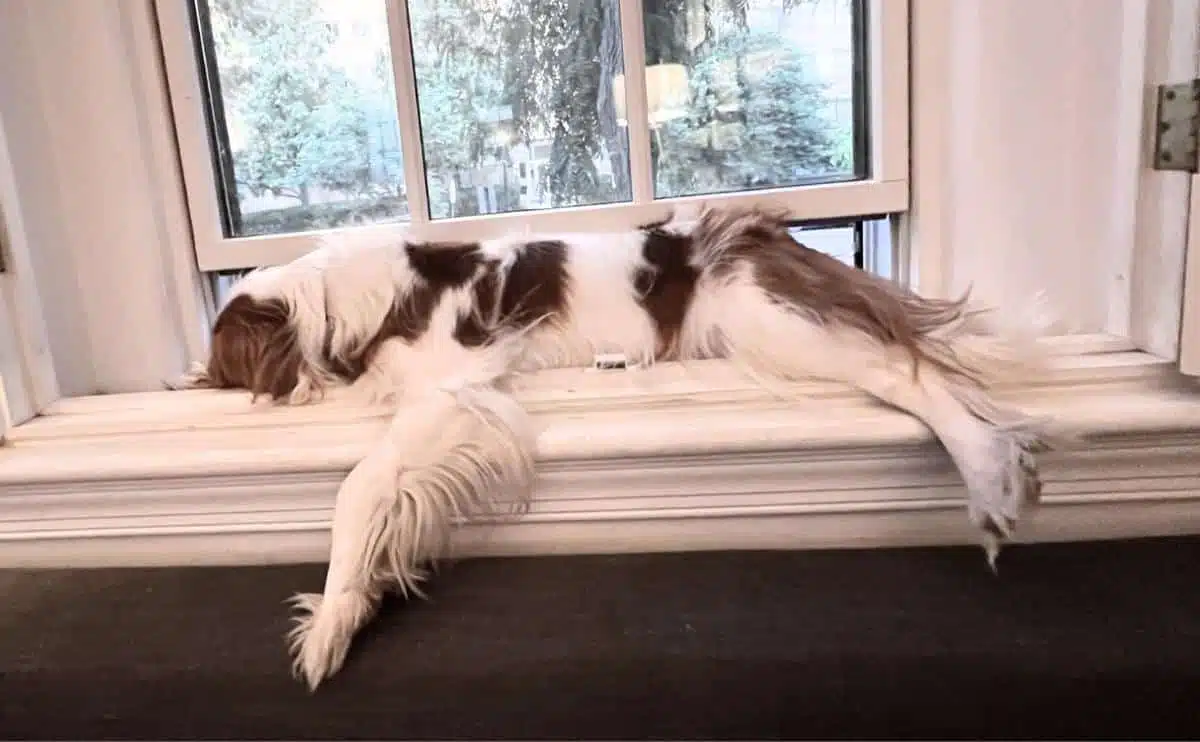
A common position for energetic, playful pups, the Superman pose involves a dog lying with his belly flat on a surface and his back and front legs sprawled out. Also called “the sploot,” this position means that dogs are getting some quick z’s but are ready for play at a moment’s notice. It’s also a great way for dogs to cool down, particularly when they’re lying on tile or hardwood floors. If your pup tends to overheat, you may want to consider an elevated dog bed, like the K&H Pet Products Cooling Elevated Dog Bed.
6. The Burrower
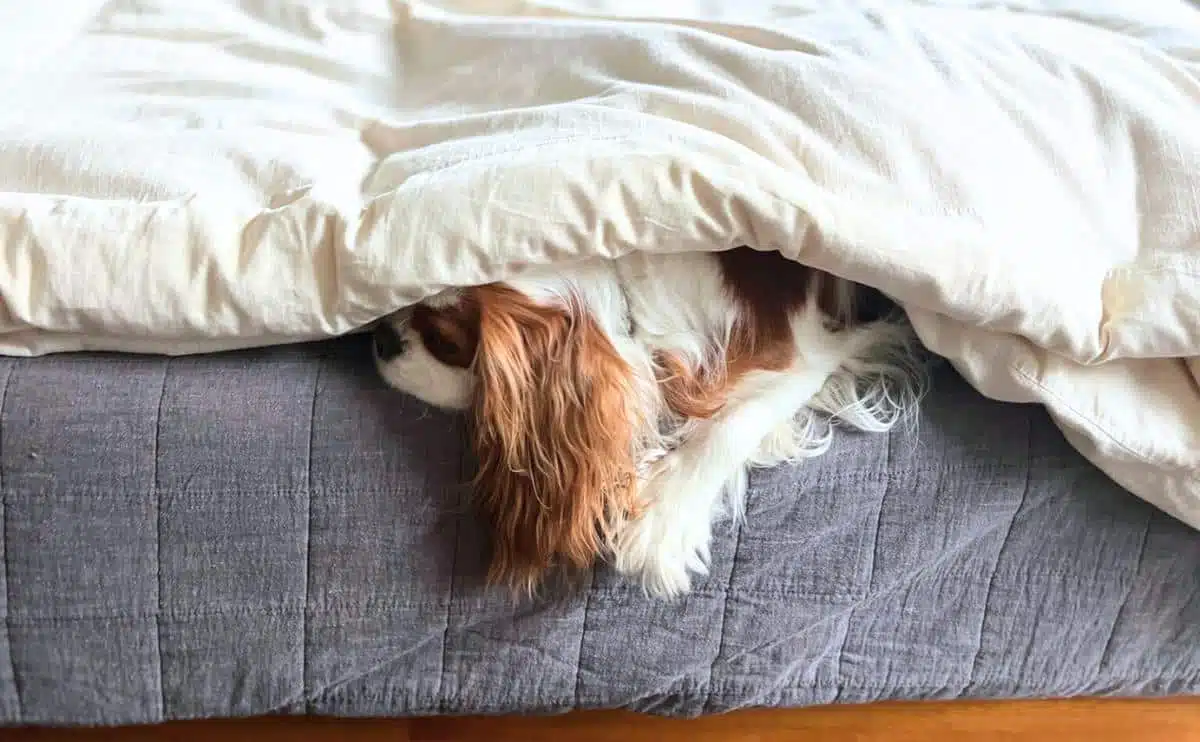
My dog Tiny is a burrower to the core. Whether he’s snoozing next to me on the couch, in bed with me, or in his dog bed, he always prefers to burrow under a blanket. It’s widely believed that dogs do this to seek additional comfort, security, or warmth. It’s also a way for anxious dogs (like mine!) to soothe themselves and block out auditory and visual stimulation.
A partially covered dog bed, like the Snoozer Cozy Cave, is an excellent choice for burrowers. Or check out the PetFusion Calming Cuddler Dog Bed, which has has a loose, soft blanket that’s attached to the bed — a perfect solution for dogs who burrow under the covers.
7. The Cuddle Bug
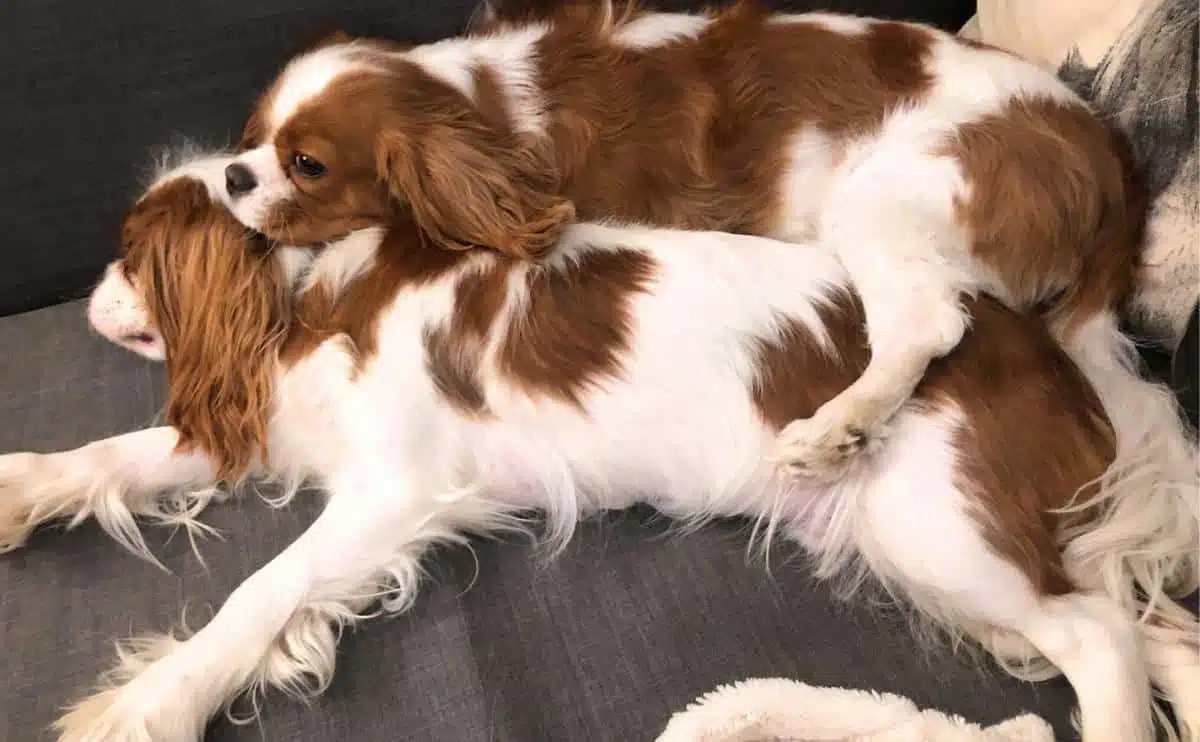
The cuddle bug is pretty self-explanatory but is one of the most endearing sleep positions. Dogs who are cuddlers often prefer to sleep snuggled up next to or on top of you or another pet. A sure sign of affection and bonding, this sleeping habit originates from when your dog was a puppy and slept nestled up with his litter mates. If you have two furry friends who love to sleep cuddled up together, the Magic Dog Super Soft Extra Large Dog Bed may give them plenty of room and comfort.
Dog Sleeping Positions Chart
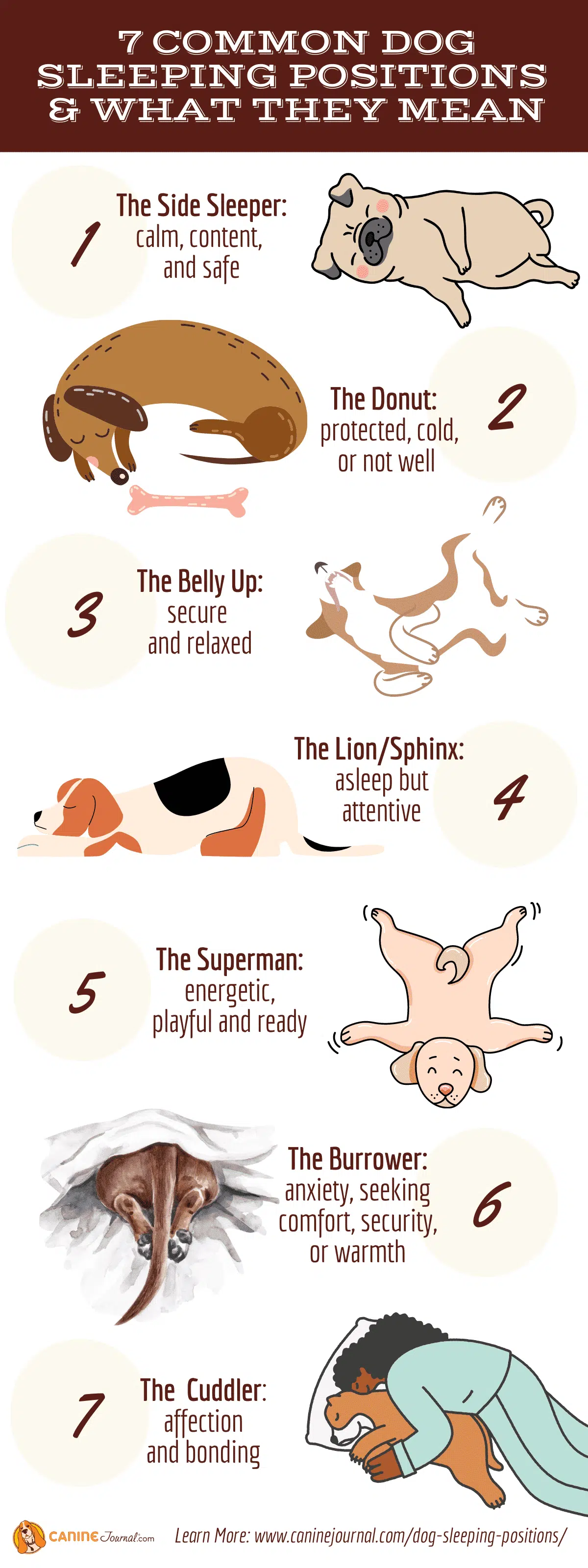
Dog Sleeping Positions When Sick
Some pups sleep with their head and neck raised on a pillow, a toy, the arm of a couch, or the side of their dog bed. While it may be that your canine companion simply finds this comfortable, it could be a sign that he has a breathing problem. Keep an eye out for noisy breathing, a fast breathing rate, or getting out of breath easily. Contact your vet if you notice these signs.
However, many dogs typically stick to their same favorite sleeping positions when they’re sick. Here are some behavioral signs to watch for before, during, or after sleep that could indicate a health problem.
- Changes in breathing or loud snoring (could be a sign of brachycephalic obstructive airway syndrome)
- Whining or whimpering while trying to change positions
- Having difficulty changing positions or getting up after sleeping
- Getting up during the night frequently
- Sleeping more than usual
Behaviors During Sleep
You may have noticed that your dog wags his tail, twitches, or makes vocalizations, such as howling, whimpering, or barking, while he’s sleeping. Is your pup dreaming? Yes, the current research suggests that dogs do dream when they sleep because they tend to have similar sleep cycles as we do. Check out our article on dog dreaming to learn more.
Frequently Asked Questions
Dog sleeping habits are fascinating, so we dug deeper into some other questions you may have.
Why Do Dogs Circle & Dig Before Hitting The Sack?
Some dogs circle, paw, or dig at their bed or other surface before lying down. This is completely normal, instinctual behavior that’s carried over from their wild ancestors. It’s believed that these behaviors in wolves help them check the area for dangers, like snakes or insects, and create a comfortable “bed” by removing rocks and sticks and smoothing down vegetation.
Why Do Dogs Sleep On Tiled Or Hardwood Floors?
Some pups overheat easily, particularly when the weather’s hot outside. Sprawling out on uncarpeted flooring simply means they’re trying to cool down. If your canine sidekick gets hot often, you may want to consider getting a cooling elevated dog bed or a pressure-activated cooling pad.
Why Do Dogs Tuck Their Paws When Sleeping?
Many pups tuck their paws under their legs while they’re sleeping. This is often a sign of contentment but can also be a way to regulate their temperature. Paw-tucking while asleep or just lying down is more common in some breeds, including Border Collies, Bulldogs, Greyhounds, Labradors, and Poodles.
Why Does My Dog Want To Sleep With Me?
In general, dogs like to sleep with their owners in bed or close to them in a room to share affection and strengthen their bond with you. It’s a wonderful sign that your pup feels secure and confident with you.
Why Does My Dog Sleep Against Me?
While it’s perfectly normal for dogs to sleep right next to their owners as a way of feeling comfort and security, some pups always need to be pressed up against their owners when sleeping. These dogs could be suffering from general anxiety and need the added security of feeling your body next to theirs.
Why Does My Dog Like To Sleep On Me?
While it may be annoying if your pup tries to sleep on top of you frequently, keep in mind that it’s just his way of showing you affection and that he feels entirely safe with you. Some dogs who have a high protective instinct may sleep on you to guard you.
Dog Sleeping Video
Here’s a summary of the various positions for you to watch and share with fellow dog friends.
The Best Dog Beds For Any Type Of Sleeper
Even if your pup sleeps in bed with you at night, it’s still important for him to have a doggy bed for napping during the day. Canines need a lot of sleep, so providing them with a cozy spot of their own can help keep your pup well-rested. See our reviews of the best dog beds for any breed and sleeping preference. You may also want to check out our recommendations for chew-proof dog beds, calming beds, orthopedic beds, and elevated beds.

